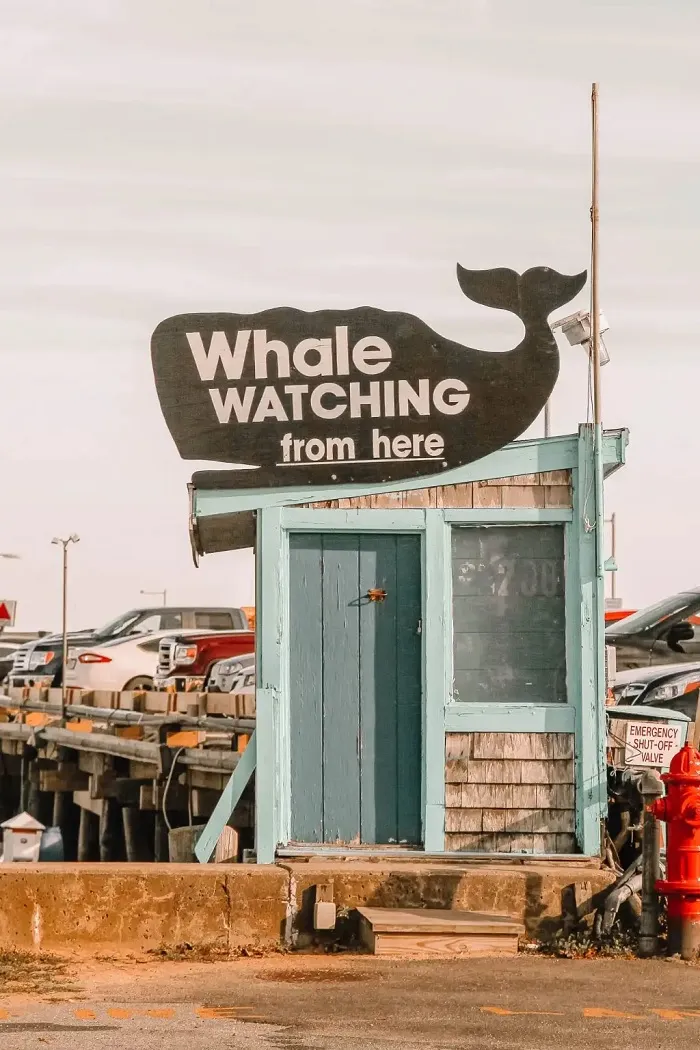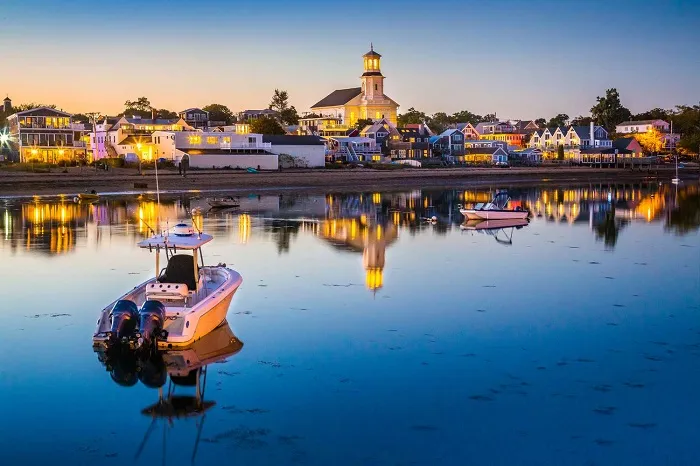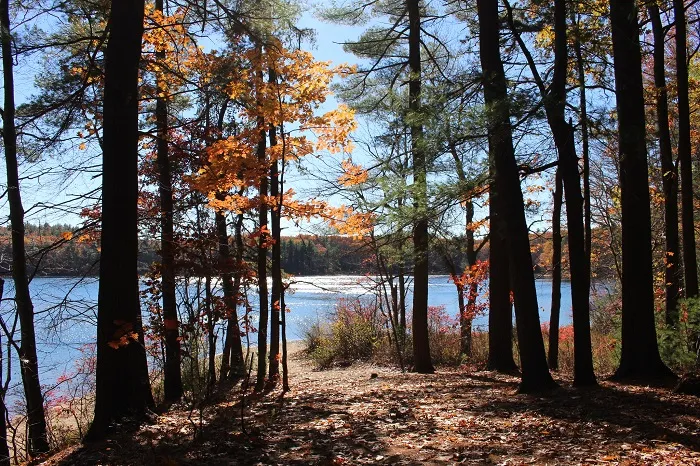Massachusetts, renowned for its historic cities and captivating coastline, harbors a surprisingly wild natural world. Beyond its cultural and historical attractions, Massachusetts is a haven for wildlife photography enthusiasts. From expansive forests and pristine lakes to sweeping coastlines, it’s home to a myriad of unique creatures, offering unforgettable photographic experiences. This article will share valuable tips and suggest ideal locations to embark on your wildlife photography journey in Massachusetts.
Why Massachusetts is an Ideal Destination for Wildlife Photography?
Massachusetts boasts incredible biodiversity, creating a rich habitat for numerous wildlife species. Its unique geographical location, at the intersection of the Atlantic coastal region and the New England mountains, offers diverse ecosystems ranging from coniferous forests, mixed forests, swamps, freshwater lakes to sandy and rocky coastlines. This richness is the foundation for the existence of various animals, from large mammals like white-tailed deer, black bears, red foxes, coyotes, to countless birds, reptiles, amphibians, and insects.
Beyond biodiversity, Massachusetts has an extensive system of parks and nature reserves, facilitating access and observation of wildlife in their natural environment. These reserves not only protect animal habitats but also provide infrastructure and support services for visitors, including hiking trails, information centers, and guided programs. This makes wildlife photography easier and safer, especially for beginners.
Must-Visit Wildlife Photography Locations in Massachusetts
Massachusetts offers countless fantastic locations for wildlife photography. Here are some notable suggestions, each with its own unique beauty and appeal:
1. Stellwagen Bank National Marine Sanctuary
Located off the coast of Massachusetts, Stellwagen Bank is one of the most biologically productive ocean environments in the world. It is renowned as an ideal spot for observing humpback whales, fin whales, and many other marine mammals in their natural habitat. Whale watching tours departing from various coastal towns like Boston, Plymouth, and Cape Cod will take you closer to these giant creatures.

Featured Wildlife: Humpback whales, fin whales, right whales, dolphins, gray seals, seabirds.
Best Time to Visit: Summer and fall (May to October) are when whales migrate to Stellwagen Bank to feed.
Photography Tips:
- Choose a reputable tour: Research tour companies and select tours with experienced guides who adhere to wildlife conservation principles.
- Prepare a telephoto lens: A telephoto zoom lens from 100-400mm or longer will help you capture impressive close-up shots of whales and other marine animals.
- Be patient and observant: Whales often appear unexpectedly; patiently observe the sea surface and listen to the crew’s instructions to not miss any moments.
- Use image stabilization and fast shutter speed: Sea waves and boat movements can cause camera shake. Use image stabilization modes and fast shutter speeds for sharp photos.
2. Cape Cod Peninsula
Cape Cod is not only famous for its beautiful beaches but also a paradise for bird lovers. This region is a crucial stopover on the migratory route of many bird species, especially coastal and water birds. Areas like Monomoy National Wildlife Refuge and Parker River National Wildlife Refuge are must-visit destinations for bird photography enthusiasts.

Featured Wildlife: Piping plovers, seagulls, terns, shorebirds, sea ducks, ospreys.
Best Time to Visit: Spring and fall are when birds migrate through Cape Cod, offering opportunities to observe and photograph diverse bird species.
Photography Tips:
- Use binoculars: Binoculars help you spot birds from a distance and locate them before approaching to take photos.
- Camouflage: Wear neutral-colored clothing and hide behind bushes or obstacles to avoid scaring birds.
- Learn about bird behavior: Understanding the feeding, living, and breeding habits of the birds you want to photograph will help you predict their behavior and capture the most natural shots.
- Shoot in continuous mode: Birds often move quickly and make sudden actions; continuous shooting mode will help you capture decisive moments.
3. Mount Watatic State Wildlife Reservation
Mount Watatic State Wildlife Reservation is a vast area with forests, lakes, and hills, creating an ideal habitat for many terrestrial animals. It’s a great destination for photographing white-tailed deer, red foxes, squirrels, rabbits, and many forest birds. Hiking trails in the park will take you to explore wilderness areas and increase your chances of encountering animals.

Featured Wildlife: White-tailed deer, red foxes, black bears (rare), squirrels, rabbits, wild turkeys, woodpeckers, sparrows.
Best Time to Visit: Dawn and dusk are when animals are most active, offering beautiful light and good photography opportunities.
Photography Tips:
- Hike trails: Explore trails in the reserve, especially those passing through forests or near water sources.
- Stay quiet and move slowly: Wildlife is very sensitive to noise and movement. Stay quiet and move slowly to avoid frightening them.
- Observe tracks: Look for footprints, droppings, or other animal signs to identify areas where they are likely to appear.
- Use a versatile lens: A versatile zoom lens from 24-70mm or 24-105mm can be suitable for various photography situations, from landscapes to animals at medium distances.
4. Other Forests and Parks
Besides the highlighted locations, Massachusetts has many other forests and parks that are also potential destinations for wildlife photography. Examples include Freetown-Fall River State Forest, Great Meadows National Wildlife Refuge, Quabbin Reservoir State Park, and many others. Each place has its own unique wildlife and natural landscapes to explore.
Essential Experiences and Skills for Wildlife Photography
Wildlife photography is not just a recreational activity but also an art form that requires patience, skill, and knowledge. Here are some essential experiences and skills you need to equip yourself with:
1. Suitable Equipment
- Camera: DSLR or mirrorless cameras with fast shooting capabilities, high image quality, and flexible customization are the best choices.
- Lenses: Telephoto zoom lenses (100-400mm, 150-600mm, or longer) are indispensable for photographing animals from a distance. Wide-angle lenses (24-70mm) are also useful for capturing animal habitats.
- Tripod: A tripod helps stabilize the camera, especially when using heavy telephoto lenses or shooting in low light conditions.
- Memory cards and spare batteries: Ensure you have enough high-capacity memory cards and spare batteries to not miss any moments.
- Clothing and accessories: Neutral-colored, comfortable clothing suitable for the weather and terrain. Hiking shoes, hats, sunglasses, sunscreen, insect repellent, and drinking water are also essential.
2. Photography Skills
- Understand your camera and lenses: Master shooting modes, aperture settings, shutter speed, ISO, and other camera functions to adjust appropriately for each situation.
- Focus quickly and accurately: Use fast autofocus modes and single or area focus points to ensure animals are always sharp.
- Composition and lighting: Pay attention to frame composition, use basic composition rules, and utilize natural light to create impressive photos.
- Shoot in RAW format: RAW format allows you more flexibility in post-processing, especially for white balance, exposure, and detail.
3. Wildlife Knowledge
- Animal identification: Learn about common wildlife species in Massachusetts, their identifying characteristics, habitats, and behaviors.
- Understand behavior: Observe and learn about animal behavior, how they move, feed, interact with each other and their surroundings.
- Respect nature: Always maintain a safe distance from animals, do not disturb or endanger them. Do not feed animals or alter their natural habitats.
Ethical Principles for Wildlife Photography
Wildlife photography needs to adhere to ethical principles to protect animals and their habitats:
- Non-intrusion: Always maintain a safe distance and do not intrude into the private space of animals.
- Non-stress: Avoid loud noises, bright lights, or actions that frighten or stress animals.
- Non-interference: Do not interfere with the natural behavior of animals, do not attempt to lure, chase, or alter their habitats.
- Leave no trace: Carry out all trash and leave no human traces in the natural environment.
- Share and educate: Share beautiful photos and meaningful stories about wildlife to raise public awareness about nature conservation.
Wildlife photography in Massachusetts is a fascinating and meaningful journey of nature exploration. With thorough preparation, knowledge, and passion, you will have unforgettable experiences and capture wonderful moments of the wildlife world here. Plan your photography trip today and discover the hidden beauty of Massachusetts!